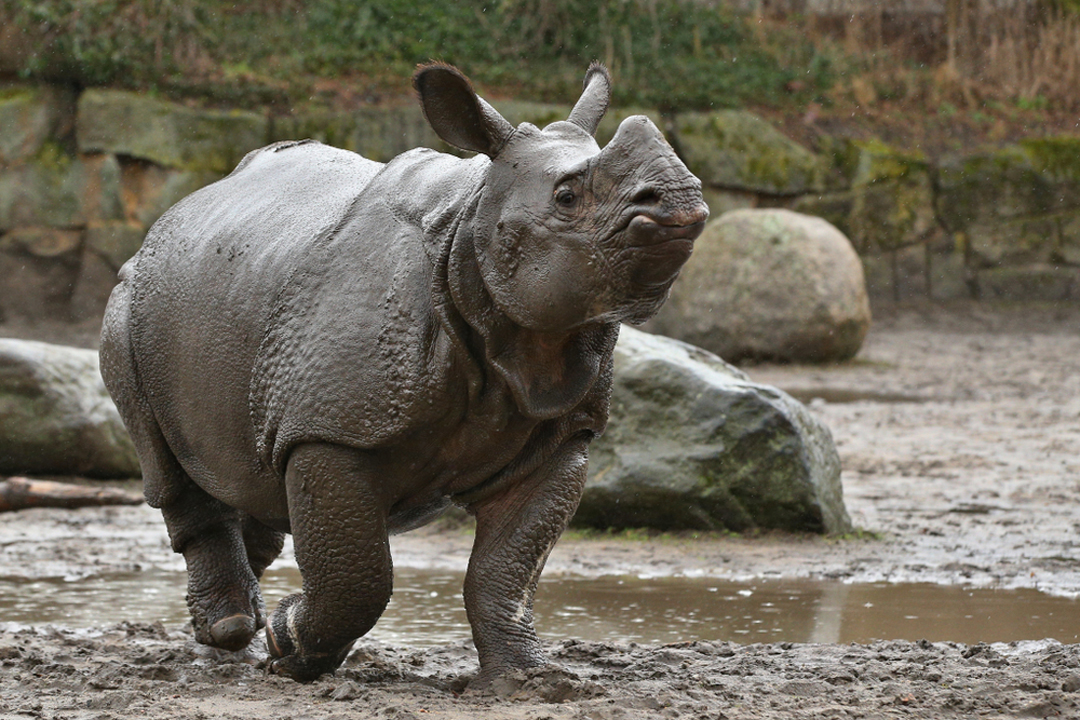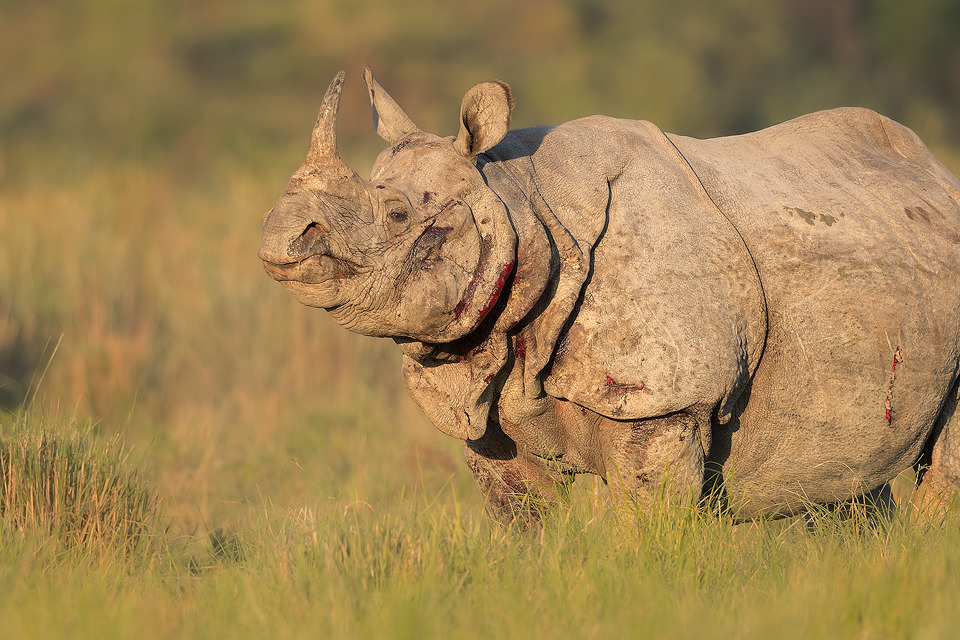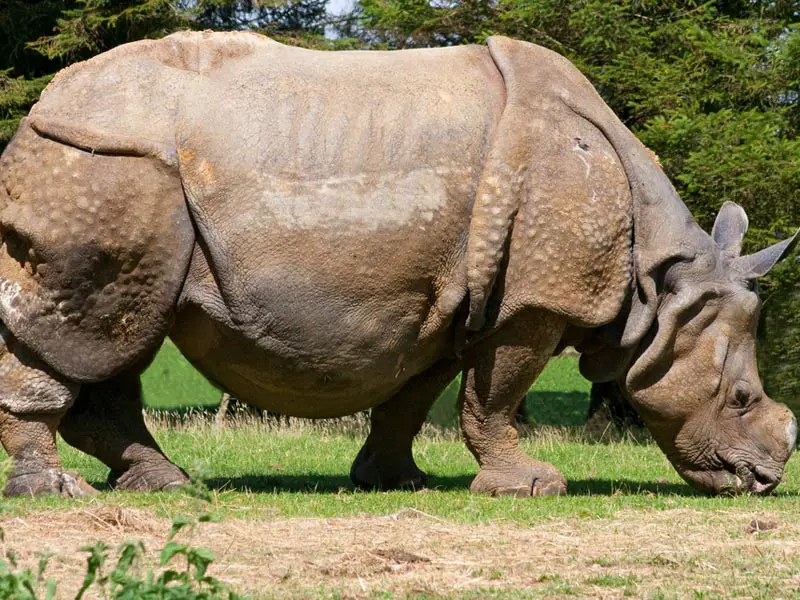The Great Indian Rhinoceros, also known as the greater one-horned rhinoceros, is a massive mammal that is native to the Indian subcontinent. It is one of the largest land animals in Asia, and can weigh up to 2,700 kg. Here are some interesting facts about this magnificent creature:
Appearance

The Great Indian Rhinoceros is easily recognized by its large size and distinctive appearance. It has a single black horn that can grow up to 25 inches in length, and a thick, gray-brown hide that is covered in folds of skin. The rhino's skin is so thick that it can withstand attacks from predators and is nearly impenetrable.
Habitat

The Great Indian Rhinoceros is found mainly in India and Nepal, where it lives in grasslands, swamps, and forests. These habitats offer the rhinoceros plenty of food and water, as well as protection from predators.
Diet

The Great Indian Rhinoceros is a herbivore, which means it only eats plants. Its diet consists mainly of grasses, leaves, and fruit. The rhinoceros has a prehensile upper lip that it uses to grasp and pull its food into its mouth.
Behavior

The Great Indian Rhinoceros is a solitary animal and prefers to live alone or in small groups. It is most active during the morning and evening hours and spends the hottest part of the day resting in the shade.
Reproduction

The Great Indian Rhinoceros reaches sexual maturity at around 5-7 years of age. Mating occurs throughout the year, but peaks during the monsoon season. The female gives birth to a single calf after a gestation period of 16 months.
Conservation
The Great Indian Rhinoceros is currently listed as vulnerable on the IUCN Red List. The main threats to the rhinoceros include habitat loss, poaching, and human-wildlife conflict. Conservation efforts are underway to protect the rhinoceros and its habitat.
Mythology

In Hindu mythology, the Great Indian Rhinoceros is associated with the god of wealth, Kubera. It is believed that the rhinoceros brings good luck and prosperity, and is often depicted in Hindu art and architecture.
Prehistoric ancestors

The Great Indian Rhinoceros is closely related to the woolly rhinoceros, which lived during the ice age. Fossils of prehistoric rhinoceroses have been found in Europe and Asia, indicating that these animals were once widespread across the northern hemisphere.
Cultural significance
The Great Indian Rhinoceros has played an important role in the cultures of India and Nepal for centuries. It has been depicted in art and literature, and is considered to be a symbol of strength and power.
Population

There are currently around 3,500 Great Indian Rhinoceroses left in the wild, with the majority living in India's Kaziranga National Park. Thanks to conservation efforts, the rhinoceros population has been slowly increasing in recent years.
Threats

The Great Indian Rhinoceros is threatened by habitat loss, poaching, and human-wildlife conflict. The rhinoceros' horn is highly prized in traditional Asian medicine, and is often smuggled out of the country to be sold on the black market.
Conservation efforts

Conservation efforts are underway to protect the Great Indian Rhinoceros and its habitat. These efforts include habitat restoration, anti-poaching patrols, and community education programs to reduce human-wildlife conflict.
Conclusion
The Great Indian Rhinoceros is a magnificent animal that plays an important role in the ecosystems of India and Nepal. It is threatened by habitat loss and poaching, but conservation efforts are helping to protect the rhinoceros and ensure its survival for future generations.